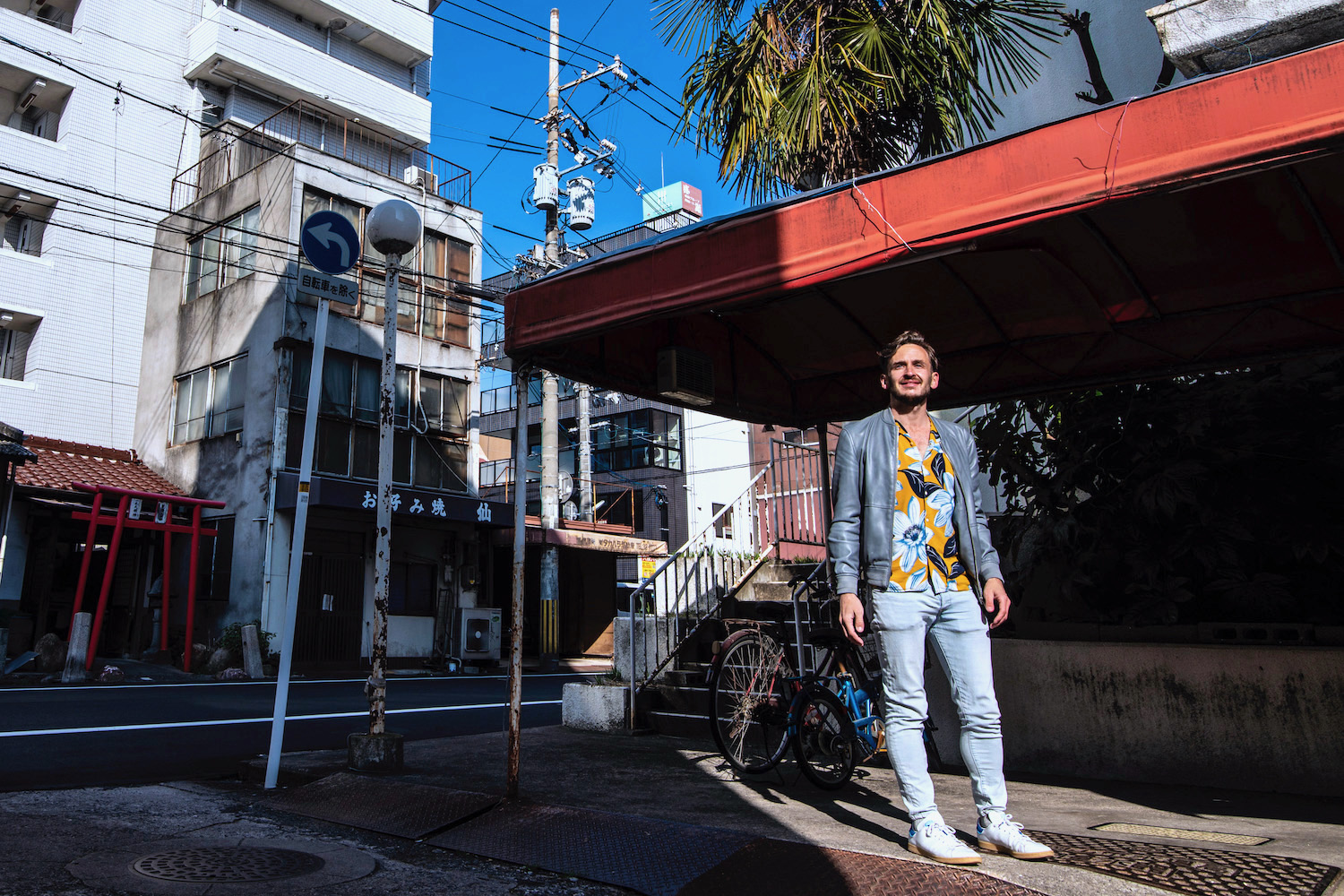It wouldn’t be fair to say I’ve never been to Okayama before. I stopped here during my 2019 sakura trip, for about an hour on the way from Takamatsu to Osaka.
I didn’t do the city justice; but the world we all lived in back then no longer exists, so I don’t need absolution. If I did, I imagine the impressive feat I performed at the Daiwa Roynet—successfully checking in without speaking a word of English—would’ve done the trick.
At least until I sat down for a bowl of barazushi, the city’s most famous culinary delight. Although it was in large part because of the conspicuous way I photograph my food (and, in this case, myself eating it), I came across as much too crude for a foreigner who spoke passable Japanese.
And make no mistake: I do speak passable Japanese now, at least under some circumstances, in spite of having studied for less than two months as I write this.
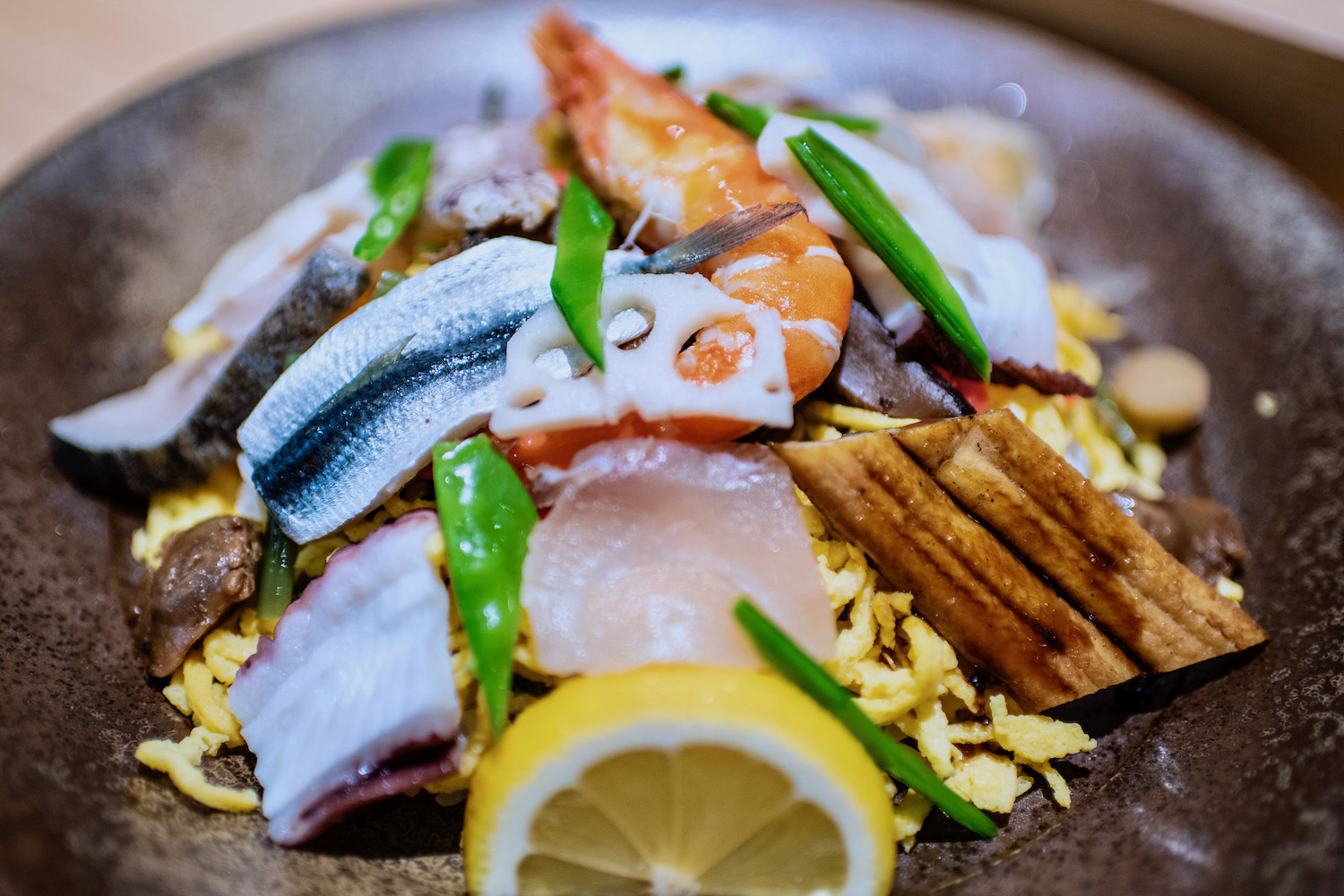
The morning of my 36th birthday, I woke up to discover that someone had tried to “cancel” me (as kids these days are calling it) because of an opinion I expressed on another platform I own. Thankfully, this person had too low a profile—frankly, I have too low a profile—for the embers of his projection and insecurity to catch fire. By the time I sat down for lunch, it was all over.
I bring this up, in the context of my second day as a 36-year old, because of how minimally my recent birthday weighed on my mind as I explored Okayama.
As has tended to be the case with secondary and tertiary Japanese cities I visit, Okayama almost immediately amazed me. And I’m not just talking about the way the twisted pines of Korakuen framed Okayama Castle (which I’d found lacking the time I saw it during cherry blossom season) and its reflection in the garden’s glassy pond.
Rather, as I made my way east toward the Asashi River and then back west toward Okayama Station, I found myself hypnotized by the quiet cacophony of the cityscape, as enthralled when I imagined how beautiful it must’ve been before decay (the same decay that defines so many other secondary and tertiary Japanese cities) set in as I was by the decay itself.
It was disorienting, literally—I struggled, on my westbound journey, to find the moribund apartment complex that had stopped me in my tracks as I stalked the rising sun an hour earlier.
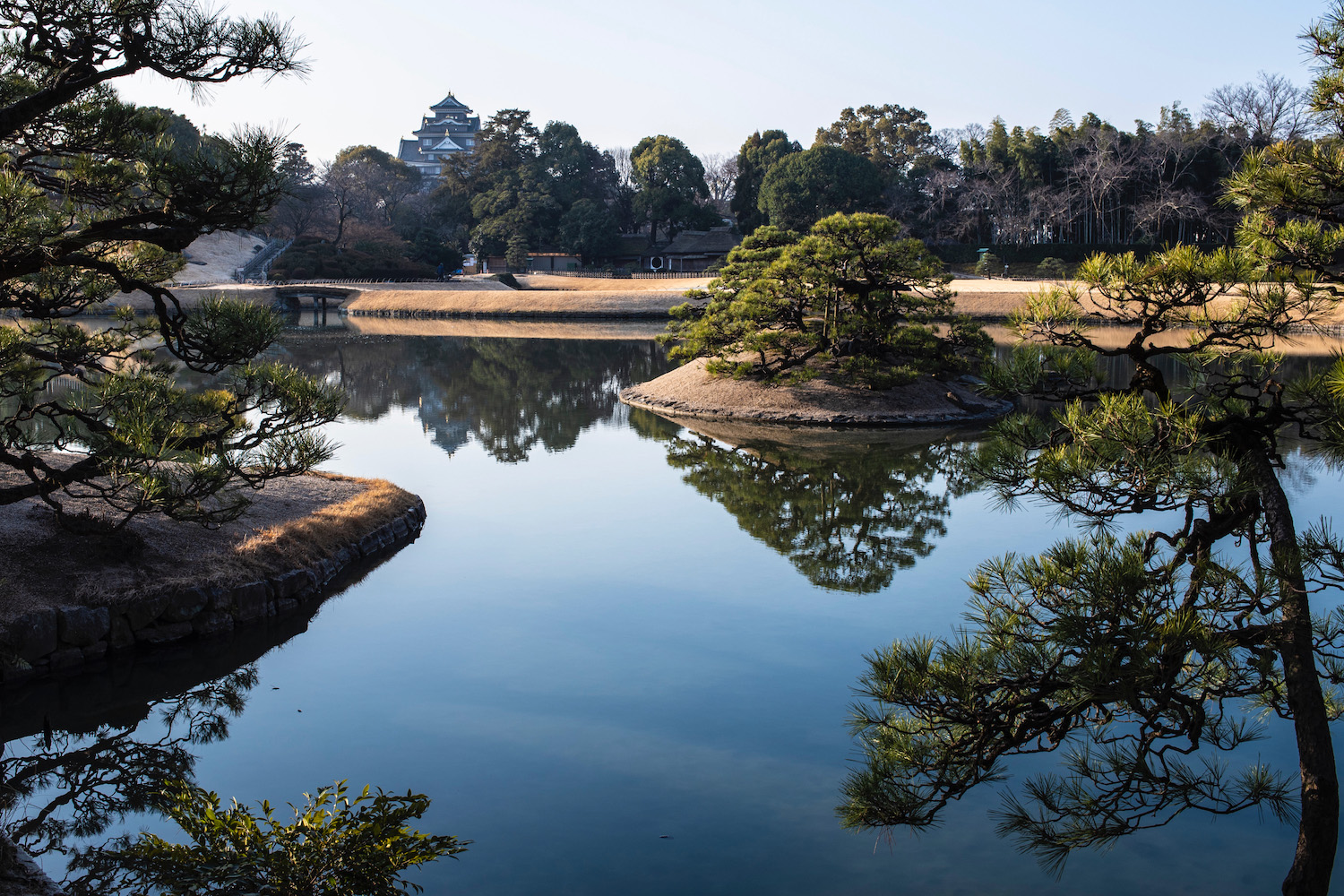
The grim reaper’s sickle continued glinting in the sunshine that showered down on Bitchu Takahashi, a village equal parts pastoral and post-industrial in the mountains north of the city. I encountered just one human being on my hour-long hike up to Bitchu Matsuyama castle, which seemed so far removed from its potential beauty (which is to say, when the sakura skeletons framing it fill out with tufts and pink and white a few weeks from now) as if it were almost a different place.
Certainly, I reminded myself as I descended the mountaintop onto the town’s well-maintained samurai street, someone has to be around to keep these buildings from falling into disrepair. Were it not for the presence of a single plum tree in full bloom, and the buzzing of a bee no doubt woken by the unseasonable winter warmth, I could simply have been walking through a still image.
The past hellish year has made me question my long-held desire to live forever, but I actually started making peace with death before two pathogens—SARS-CoV-2 and pandemic authoritarianism—emerged from China at the dawn of the decade. It was a few weeks before I turned 35; I was stateside with a friend of mine I used to consider a kindred spirit, but whose life path has diverged almost completely from mine in the years since we last lived in the same city.
“I realized that our task as we get older,” I told her as we walked past a crane-filled pond, “isn’t learning how to live—it’s learning how to die.”
My words weren’t original; I’d paraphrased them from another friend of mine I also rarely speak to these days.
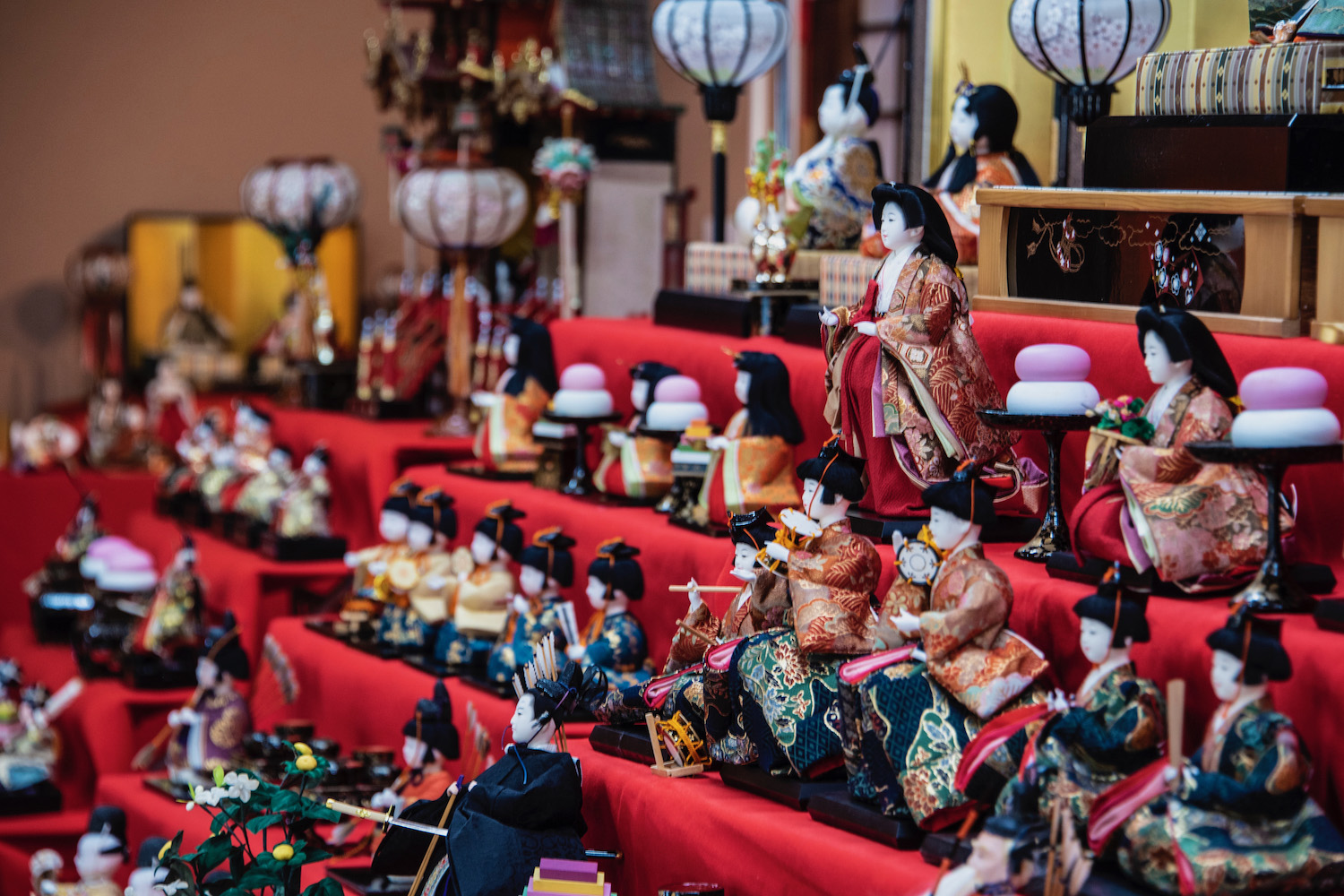
They surfaced again in me, however, when I arrived at the famous canal of Kurashiki’s Bikan historical district, whose weeping willow tendrils were barren of their iconic emerald leaves. The crane that danced atop its uncharacteristically windblown waters was no doubt a different breed than the dozen or so my long-lost friend and I had marveled at 13 months prior, but close enough in size and shape to jog my memory.
I’d be lying if I said Kurashiki wasn’t slightly disappointing—excepting, of course, an enchanting display of traditional Hina dolls on exhibit at Shinkei-en. The silver lining, of course, was that I arrived back in Okayama just in time to visit Korakuen again (yes, it’s stunning enough to warrant paying the entry fee twice in the span of 12 hours), just as the end-of-day light painted the garden’s plum grove in pinks and purples as vibrant as the celadon of the bamboo grove behind them.
It wasn’t shocking that a crane was walking underneath the colorful branches—they literally breed them here. But it did seem serendipitous at any rate, even if Megan was 7,000 miles away, freezing in the Texas power outage.
The recent passing of the anniversary of my birth did flash before my eyes briefly when I sat down for dinner, the only customer foreign or Japanese in an okonomiyaki place I’m shocked wasn’t packed at 6 pm on Saturday. I successfully ordered an oyster-filled pancake (a mayo-free one, at that: マヨネーズなしお願いします) as effortlessly as I’d checked into the hotel the night before, and precisely as in awe of my sudden linguistic “click.”
Maybe 36, I thought to myself as I exited onto the streets, under a sky far less black than I expected for this time of evening in the end of the middle of February, is when age really does become a number.
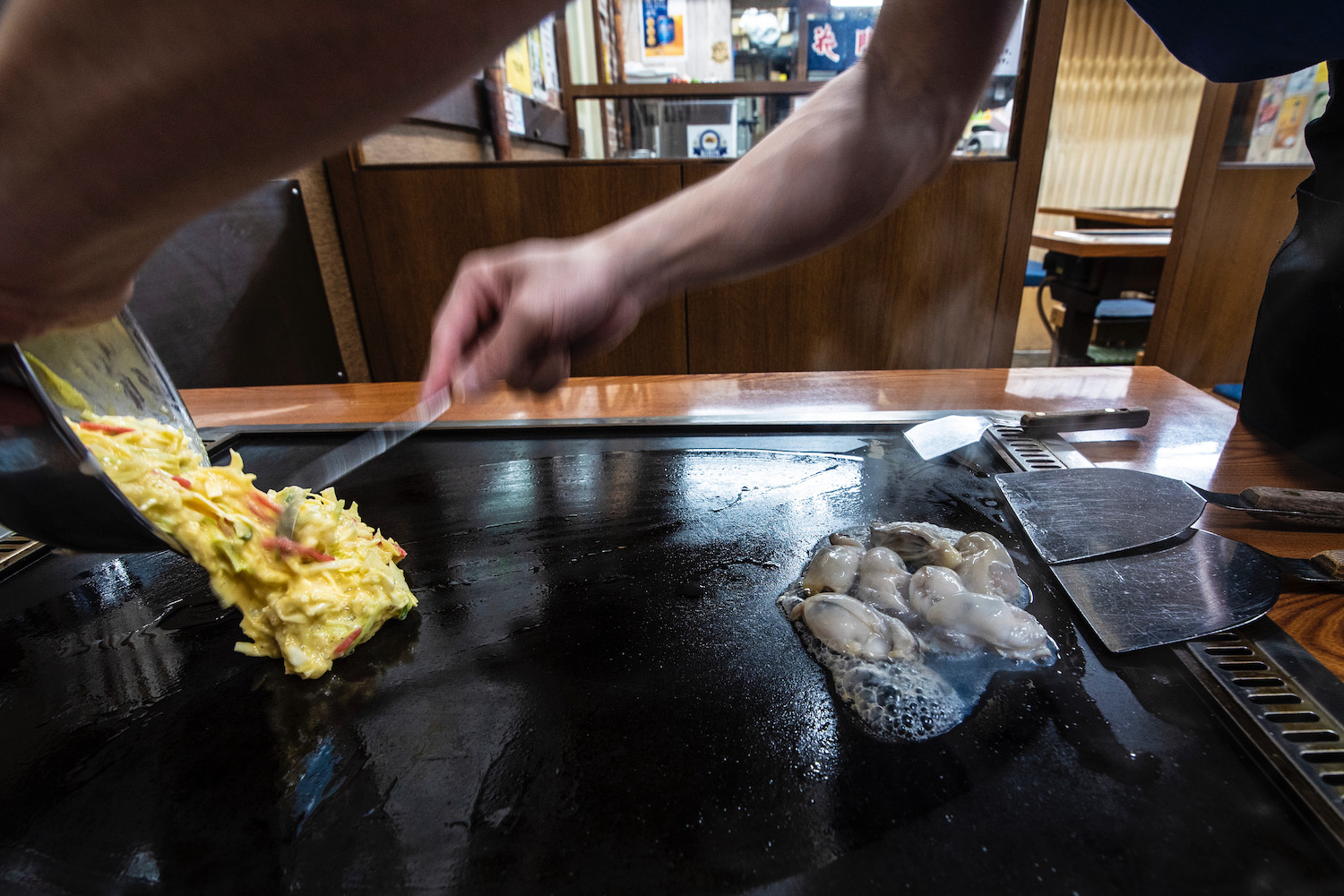
On the train to Onomichi this morning, I felt nothing, so I pondered the definition of serenity. Is it the absence of sensation, or a balance of feelings struck so perfectly that its harmony is almost numbing, like the sizzle of a Sichuan peppercorn on your tongue?
Certainly, I was far from serene after racing up the hill to Senko-ji temple and the Path of Literature, where I anticipated a life-changing view of Onomichi’s famous harbor. Instead, I gazed out onto a vista so washed out by backlight it nearly blinded me.
I’m old enough to know better: It is precisely when you think something’s in the bag that it evades you.
Indeed, I got my shot—I found my shot—only when I stopped looking for it, when I accepted, even embraced that it might remain elusive.
The funny thing was, past this point, that every scene I came across seemed even more arranged just for me to photograph it, from shrine stairways shrouded in plum trees at full bloom, to an alley overflowing with Japanese kitsch, presumably as some kind of tribute to the victims of the torrential rains that struck Western Japan last year.
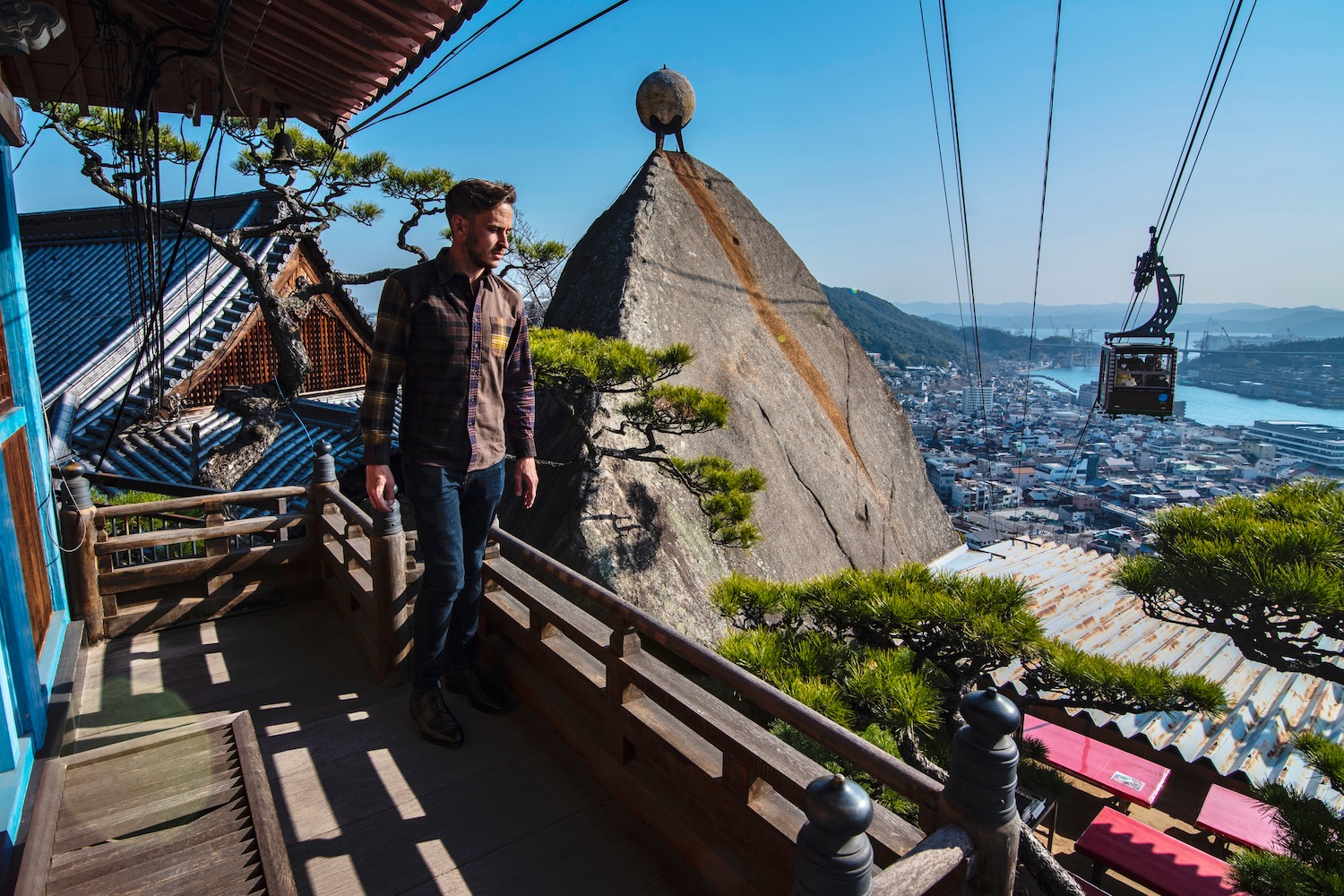
Along the aptly-named “Old Temple Trail,” as had been the case in Bitchu Takashima, an eerie solitude surrounded me. If I were a more superstitious person, I might’ve read a ghostly presence into the way the wind screamed through the wooden panels of the houses, which were seemingly uninhabited.
Yet I’m not superstitious, in spite of my belief in serendipity. Indeed, this belief rests in a recognition that sometimes (as a fellow student in my high school English class had reminded our neurotic teacher during our Othello unit) a knife is just a knife.
By the time I reached the summit of the trail, the stunning Saikoku-ji, I’d experienced what I might’ve described as a total eclipse of the heart, had I come of age in the 80s instead of simply having been born then. No longer annoyed by or beholden to the harsh morning light, I could admit the inevitable truth my prior arrogance concealed: Of course Onomichi was home to one of the most stunning vistas in all of Japan.
I’m more on the fence, if I’m honest, about the ramen—this, to me, is the most overrated of Japan’s mainstream foods—even if I did buck 36 years of tradition and stand in line for half an hour to partake in Onomichi’s supposedly superior version of it.
The soundtrack to my lunch—minus the slurping of every human being besides myself in the ramshackle eatery, of course—was a Bossa Nova version of Fleetwood Mac’s “Dreams.” It called to mind both my long-lost life in Bangkok, and the extent to which the day-to-day of my seemingly storybook existence is, as I live it anyway, more a low-budget approximation of a blockbuster than the real thing.
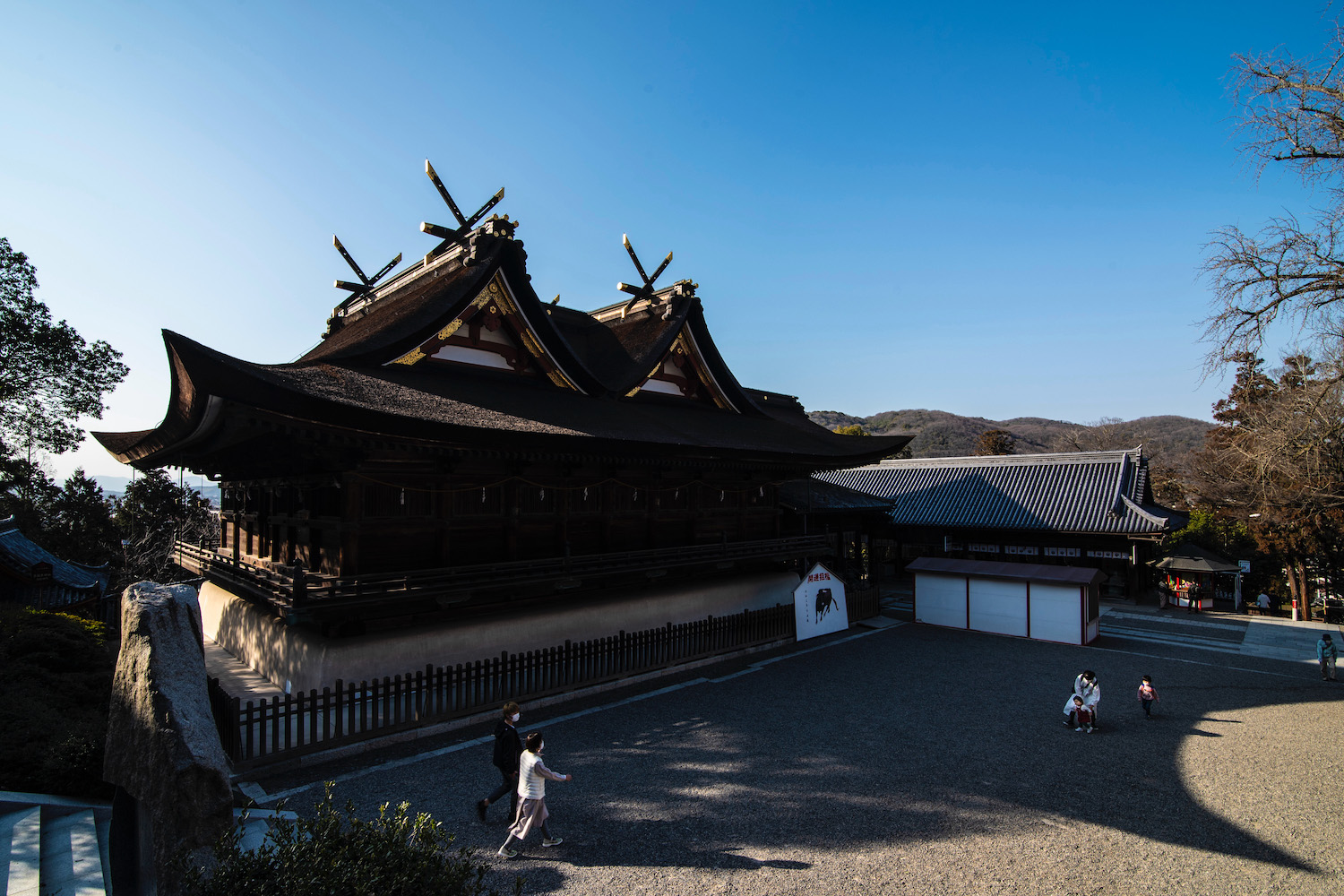
I ended my first real trip to Okayama at Kibitsu Jinja which, in spite of being a Japanese national treasure (their words, not mine) was a place I’d never heard of until 48 hours ago.
I always find the stories of Shinto shrines to be more interesting than the buildings themselves (which tend to be uniform throughout the country), and this one was no different. Somewhere in, around or beneath this building is buried the son of Korei, the seventh of Japan’s legendary emperors, and the first of the Yayoi period.
I literally mean legendary: The only proof Korei ever lived is the presence of his name in the imperial lineage. As I walked under an ume bough toward the Honden-Haiden, I pondered the good fortune of the shrine’s most famous permanent resident.
I mean, imagine being the offspring of someone who existed in name only, yet hundreds of people visit the place of your entombment 23 centuries after your death.
As I exited the shrine down a long tunnel of twisty pines to begin my journey back to Okayama-proper, I came upon a plaque that tied the area around the shrine (falsely, I would later learn) to the famous Japanese Momotarō myth.
I can’t say whether I still want to live forever, as I’ve always wanted to do, if such a thing were even possible. But I can say for sure I have zero interest in immortality: Who wants to be remembered for a truth that became a lie?
Other FAQ About Visiting Okayama
Why should I visit Okayama?
Underrated Okayama is home to a large castle and one of Japan’s best gardens, as is located within day-trip distance of scenic, historical Kurashiki, as well as the picturesque port city of Onomichi in Hiroshima prefecture. Although Okayama is relatively popular among Asian tourists, it’s still much less crowded than cities like Kyoto and Osaka.
What is Okayama, Japan known for?
Among Japanese tourists, Okayama is known for Okayama Castle and Koraku-en garden. Beyond this, Okayama is known as the origin of the Momotaro or “peach boy” myth, which is well known among Japanese people. This is reflected in peach characters and symbols around the city.
Is Kurashiki worth visiting?
Kurashiki’s Bikan Historical Quarter is definitely worth of a day trip on your next trip to Okayama. However, I’m not sure it’s worthy of spending the night in Kurashiki itself, unless of course you plan a very in-depth exploration of sites in the quarter.



